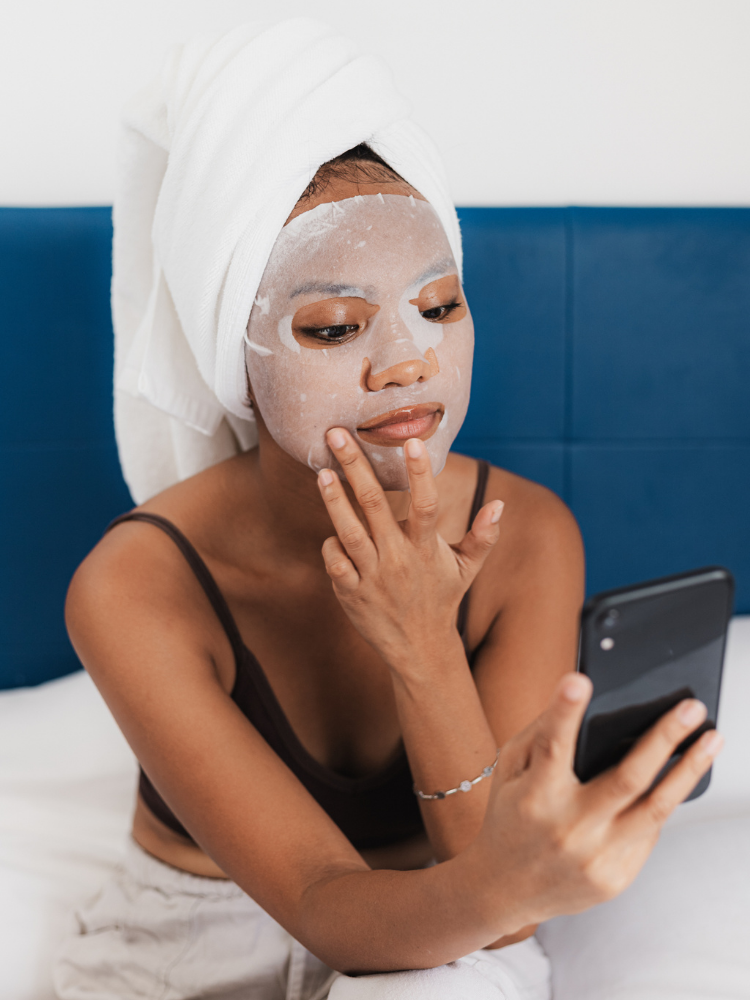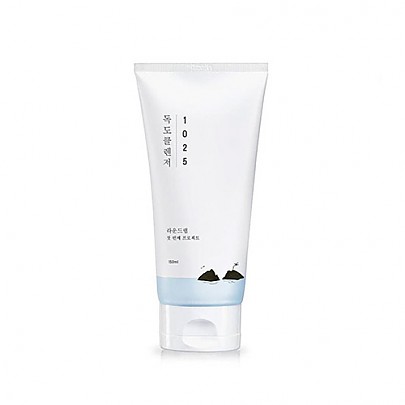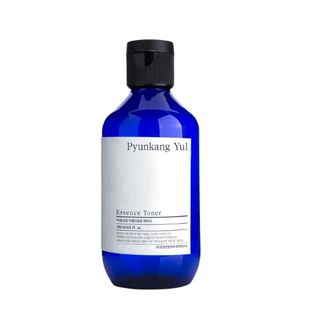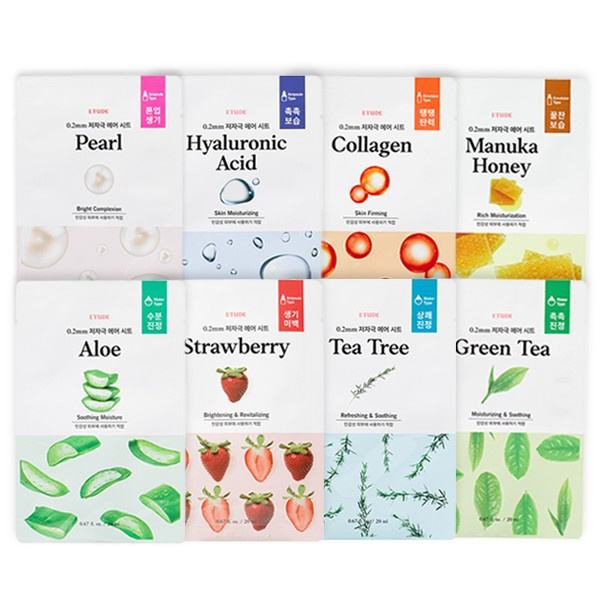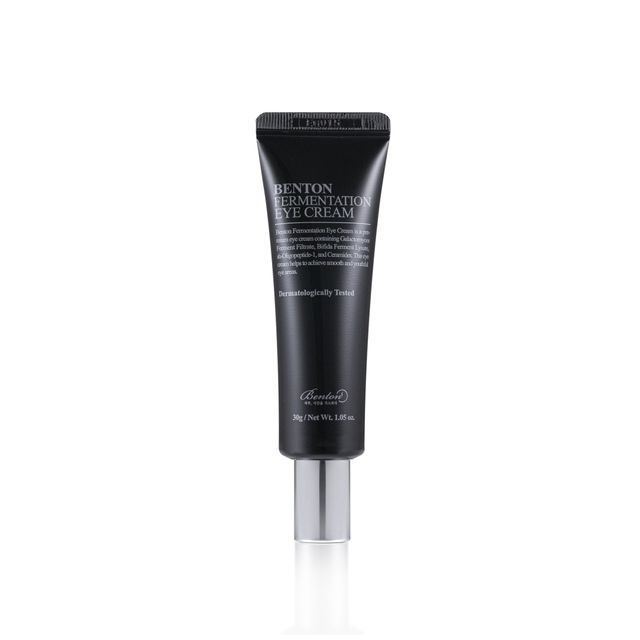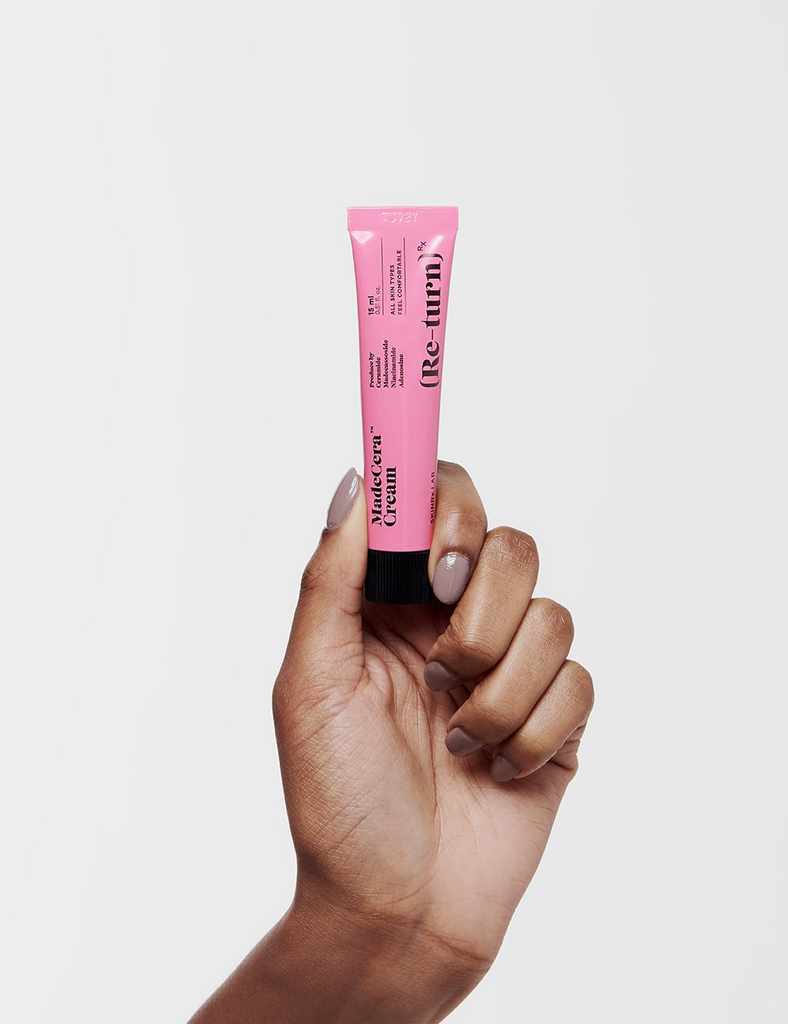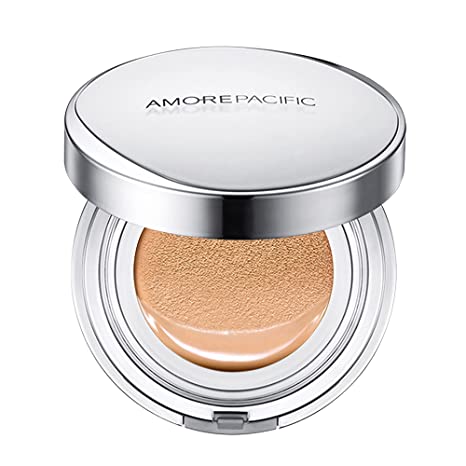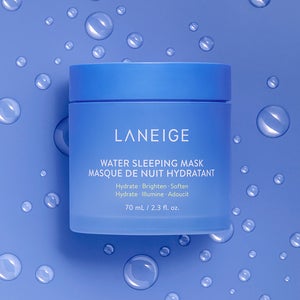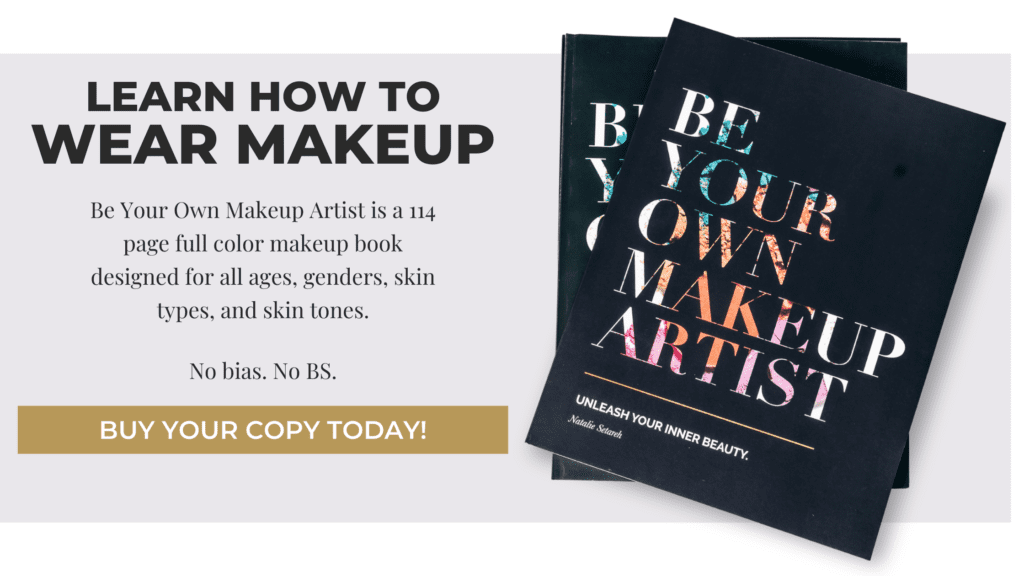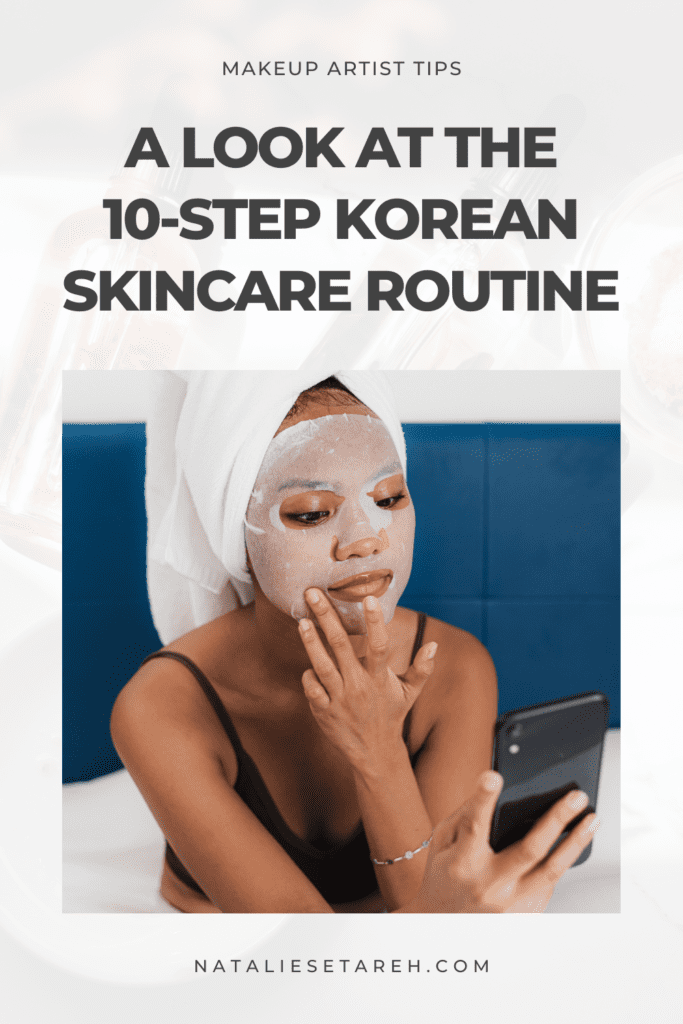 The post was originally published on January 21, 2022. Edited: December 28, 2023
The post was originally published on January 21, 2022. Edited: December 28, 2023
Hey! Before we get started, I just wanted to let you know that this post may contain affiliate links. What does that mean? If you click on one of the links and make a purchase, I may receive a small commission at no extra cost to you.
Don’t worry, I only recommend products that I personally use and love, so you can trust that I’m not just trying to make a quick buck. If you want to learn more about how I use affiliate links, be sure to check out my privacy policy. Thanks for supporting me and this blog!
A Brief Journey through Korean Beauty: Beyond the 10-Step Routine
As I delve into the intricacies of the renowned Korean 10-step skincare routine, it’s impossible to ignore the global fascination with achieving that enviable “glass skin” glow. However, it’s time to peel back the layers and explore the diversity within Korean beauty products, moving beyond the often emphasized fair and pale skin tones that have dominated the narrative.
K-beauty has taken the world by storm, yet it’s crucial to recognize that beauty in Korea is a vibrant spectrum, reflective of its rich cultural heritage. The persistent portrayal of a narrow beauty ideal has led to a form of “whitewashing,” overshadowing the beautiful array of skin tones that grace Korea.
In this exploration of the 10-step Korean skincare routine, my commitment is to spotlight the 10-step routine and share brands that embrace and celebrate the entirety of Korean skin tones. From the palest to the deepest hues, I am here to champion inclusivity. Our journey through Korean beauty products will showcase brands that prioritize formulations catering to the diverse skin tones of Korea because true beauty transcends boundaries and finds its essence in celebrating our unique, individual radiance.
For more about the history of how Korean beauty brands have influenced the global beauty industry, read this.
Before Getting Started, Make Sure You Know You’re Skin Type!
Whether you’re a seasoned K-beauty enthusiast or just dipping your toes into the world of radiant skin, understanding your skin type is the crucial first step toward achieving that coveted Korean glass skin. If you’re unsure about your skin’s unique needs, worry not! Before we delve into the exquisite details of the 10-step Korean skincare routine, take a moment to discover your skin type with our free, personalized Skin Type Guide. It’s a comprehensive resource designed to demystify your skin’s characteristics, paving the way for a tailored skincare journey.
Now, let’s embark on a deeper exploration of the 10-step Korean skincare routine, curated by my sister Azadeh, a dedicated follower of K-beauty long before its global surge in popularity.
However, you’re probably here to learn more about what a 10-step Korean skincare routine looks like. Fortunately for you, my sister Azadeh has been a loyal follower and subscriber of Korean beauty long before it’s gone mainstream. She put together an amazing 10-step Korean skincare routine for you below.
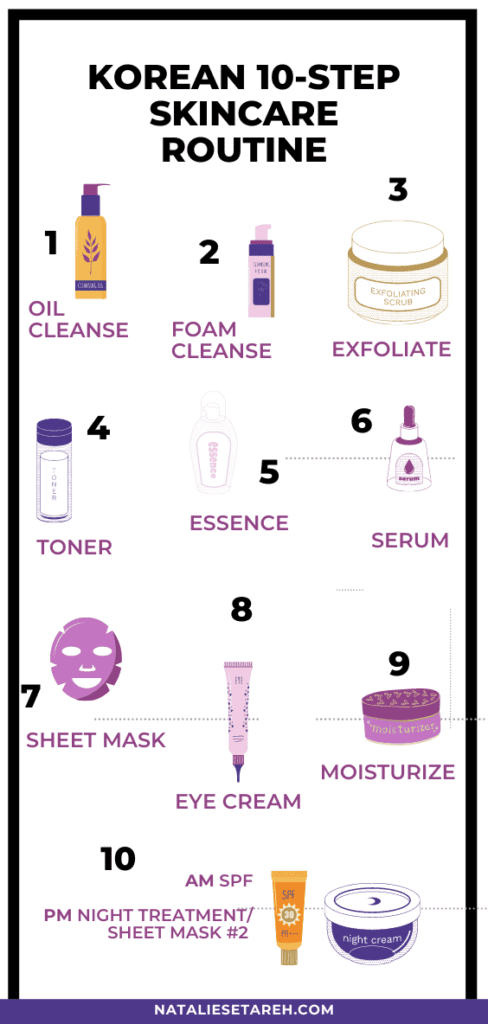
Remember, the standard Korean skincare routine generally encourages the use of over 10 products daily or twice a day. To achieve that signature glowy, radiant “glass skin” at home, you would need to incorporate the following steps into your routine:
10-Step Korean Skincare Routine
1 – Oil Cleansing
Allow me to introduce the foundation of our skincare journey: oil cleansing.
Despite initial reservations, oil cleansers operate on a simple yet profound principle—like dissolves like. This means the oil in the cleanser adeptly lifts away the oils on your face, including stubborn makeup, sunscreen, and accumulated impurities. As you rinse, it takes this residue with it, leaving your skin impeccably clean, supple, and prepared for subsequent skincare steps.
Dear Klairs Gentle Black Fresh Cleansing Oil, which retails for $24.
2 – Foaming Cleanser
Now that our canvas is primed from the oil to cleanse, let’s talk foaming cleansers—the unsung heroes of effective skincare. Unlike oil cleansers, foaming cleansers take the stage with a different approach. They cut through the remaining impurities and provide a deeper cleanse.
But here’s the catch: not all foaming cleansers are created equal. Enter the Roundlab Dokdo Cleanser, a noteworthy player in this Korean skincare routine. This cleanser caters to a range of skin types. Whether your skin thirsts for hydration, craves oil balance or has specific concerns, Roundlab Dokdo Cleanser has got you covered. However, if you have dry skin and/or find foaming cleansers to tighten ‘too much’, try grabbing a water-based cleanser.
Fun fact:
Steps 1 and 2 in your skincare routine are collectively known as double cleansing—a technique most makeup artists swear by for their clients after a day of wearing makeup. So, when you pick up that bottle, take a moment to read the label. Look for formulations that align with your skin’s unique needs, whether it’s hydration, balancing oil production, or addressing specific concerns.
3 – Exfoliator
Alright, let’s talk about exfoliation – the secret sauce for revealing that fresh, vibrant skin hiding beneath the surface. While I’m personally not a big fan of exfoliating the face every day (and I’d guess most estheticians recommend against it regardless of your skin type), in keeping with the 10-step Korean skincare routine, I’m including this step.
Our star player for this step is the Neogen Lab Green Tea Bio-Peel a gentle yet effective way to bid farewell to dullness
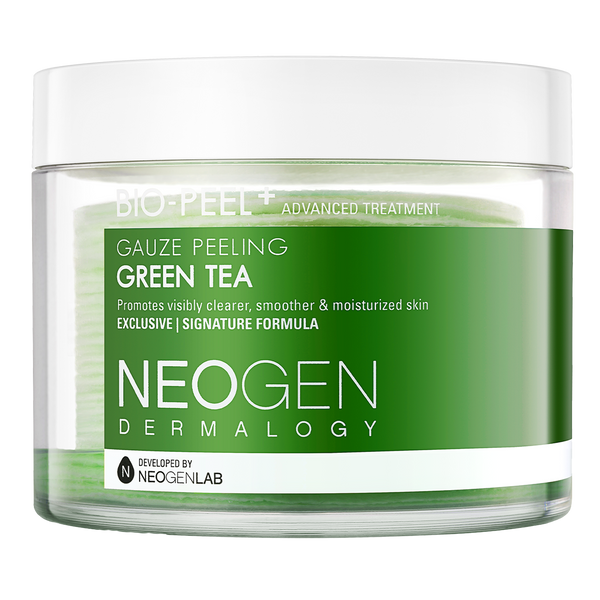
NeoGen Bio-Peel Gauze Green Tea
In the world of skincare, exfoliation is like your skin’s reset button. It clears away the old, making room for the new. So, let’s give our skin the love it deserves – a gentle exfoliating routine for that fresh, radiant glow. Incorporate the Neogen Lab Green Tea Bio-Peel a couple of times a week. It gives your skin the nudge it needs without pushing it over the edge.
4 – Toner
Now, let’s dive into Step 4 – Toner, a game-changer that’s often underestimated. Toner does more than just balance your skin’s pH. It preps your canvas, making it more receptive to the goodness that follows. Think of it as the pre-game pep talk for your skincare routine. Toner is like the refreshing splash your face needs after a good cleanse. It’s not just an extra step; it’s the hydration hit your skin craves.
Pyunkang Yul Essence Toner It’s not just popular; it’s affordable and easily accessible online. Plus, it’s a favorite in the K-beauty world.
5 – Essence
Next is the essence, which is great for brightening dull skin. It also provides long-lasting hydration and “plumps” up the skin! Cosrx Advanced Snail 96 Mucin Power Essence is a good one. It contains 96% snail mucin, which is a powerhouse ingredient that you’ll find in many Korean skincare products.
6 – Serum
You’re probably already pretty familiar with serums, and probably use one or two in your current skincare routine. This is something that’s probably worth spending a little bit more money on if you can, because the ingredients really matter. The MISSHA Time Revolution Night Repair Ampoule 5X is a best-selling K-beauty serum that costs about $50 for a 50 ml bottle.
7 – Sheet Mask
Sheet masks are almost synonymous at this point with K-beauty. I am not a huge fan of them because of the waste factor. I would rather just apply the product to my skin rather than have a disposable mask, but if you want to do the 10-step Korean beauty routine, sheet masks are a part of it. You can find these pretty much anywhere, even at many popular and mainstream drugstores!
8 – Eye Cream
The skin around your eyes is SO important to take care of, so I love that one of the 10 steps is dedicated to this area. The skin is extra thin, so it’s more prone to wrinkles. Keeping it really nice and hydrated is key to appearing more youthful. There are so many options when it comes to good eye creams, but the Fermentation Eye Cream by the brand Benton is a popular Korean product and the price point is really good.
9 – Moisturizer
Next, you need a separate moisturizer for the entire face, neck, and décolletage area. So many people are under-moisturizing, and it’s not just those with dry skin. You don’t have to spend a lot, either. There are great drugstore (and drugstore-priced) options out there that do a great job. The cult-favorite MadeCera cream by SKINRx LAB is great for all skin types, even acne-prone skin. You should be moisturizing twice per day to keep your skin hydrated and happy!
10 – AM Sunscreen / PM Night Cream, Night Treatment, or Sheet Mask #2
The last step of the 10-step beauty routine is kind of a choose-your-own-adventure. If you’re doing this skincare routine in the morning, you should definitely be applying an SPF as the last step in the process. If you’re doing it at night, think about what your skin needs most. It might be a night cream, some kind of mask or treatment, or some people do a second sheet mask at this point. I would personally go for a night cream or overnight mask.
K-Beauty and Active Ingredients
Taking a cursory glance at some of these products, you may notice another trend that has very recently infiltrated skincare and makeup: active ingredient-focused marketing. Instead of buying a “miracle cream” from some high-brow brand, people are starting to look for key ingredients in order to make purchasing choices. Something entirely unique to Asian beauty is the use of ingredients that most Western audiences may not have previously been exposed to. Here’s a more in-depth look at some of the unique and popular active ingredients found in K-Beauty products:
Bee Venom
It is marketed as anti-aging or for problem-prone skin. Bee venom is believed to stimulate collagen production, resulting in firmer and more youthful-looking skin. It may also have anti-inflammatory properties.
Snail Secretion
It is used like a humectant to retain moisture. Snail mucin is rich in glycoproteins, hyaluronic acid, and glycolic acid. It helps hydrate the skin, promote cell regeneration, and improve overall skin texture.
Rice water or Sake
It is a traditional clarifier. Rice water is known for its brightening and clarifying properties. It contains vitamins, minerals, and amino acids that contribute to a more even skin tone.
Fermentation
It is a popular process in formulation to boost ingredient properties. Fermentation breaks down molecules into smaller, more readily absorbed forms. This enhances the efficacy of ingredients, promoting better absorption and nutrient delivery to the skin.
Ginseng
It is often used like caffeine. Ginseng is known for its energizing properties. In skincare, it can help revitalize and brighten the complexion. It’s also believed to have anti-aging benefits.
The list can go on forever. Many of these ingredients are especially Korean, and it makes sense. Korea is extremely culturally homogenous, and its economic decisions are usually in favor of promoting domestic goods over imports. Why buy an expensive Western foundation that isn’t necessarily made for your skin and doesn’t fit the standard of beauty where you live? Why not use the historical or cultural remedies that are available, especially if it helps your local economy, work well, and are affordable?
I can’t help but feel like Korean beauty is an equal and opposite reaction to the growing trend of beauty interest on the internet. Yep, the internet. You’ve probably noticed that the internet is not shy when it comes to excess in order to supply endless amounts of content. We have ALL seen influencer after influencer promoting beauty routines that only look good on camera in front of a harsh ring light.
And I’ll say it again – skincare is the true foundation of makeup.
Don’t know your skin type or where to start? Take my skin type quiz and get my detailed skin type guide!
Beauty is about perception, not about make-up. I think the beginning of all beauty is knowing and liking oneself. You can't put on make-up, or dress yourself, or do you hair with any sort of fun or joy if you're doing it from a position of correction.
kevyn aucoin
